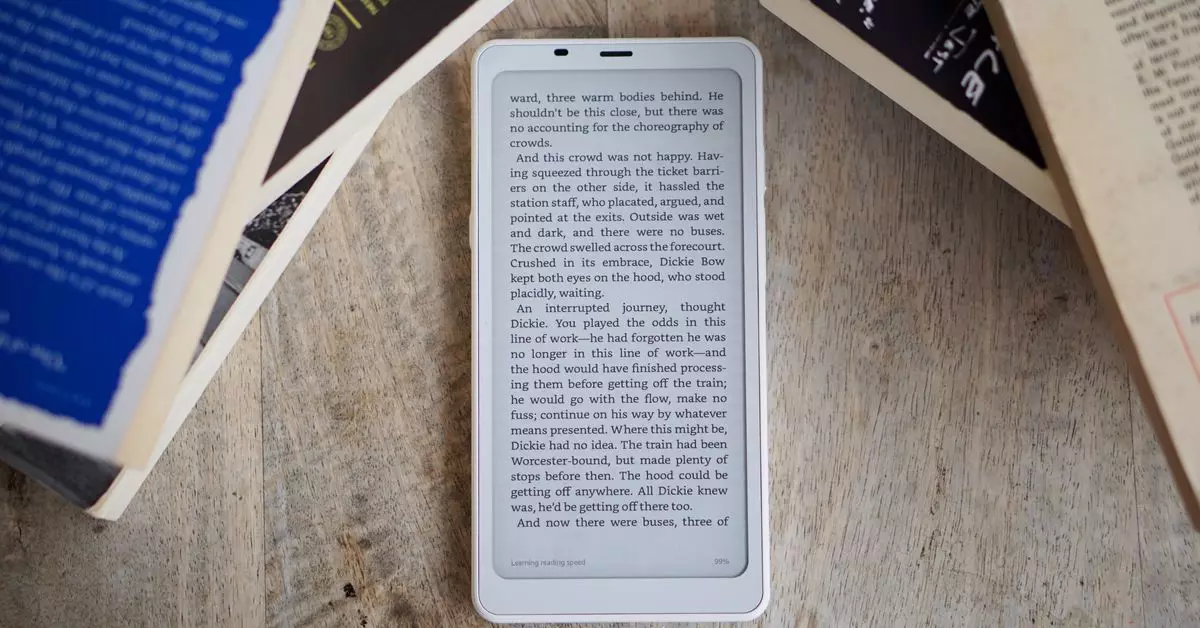The evolution of technology often leads enthusiasts to anticipate transformative advancements with each new iteration of beloved devices. In the case of the Boox Palma 2, the latest offering from Onyx, there exists a tangible dichotomy: the device remains largely unchanged from its predecessor, the original Palma. This raises an important question about innovation in consumer technology — when does a product’s lack of change indicate reliability, and when does it signal stagnation?
Onyx’s Boox Palma 2 retains the same compact size as its forerunner, which makes it quite popular among readers looking for a lightweight device. Its dimensions are akin to a standard smartphone, providing a convenient option for those who wish to slip it into a pocket or purse without inconvenience. The E Ink Carta display continues to deliver a pleasant reading experience, which is a defining feature for avid readers. However, the anticipated upgrades in build quality have fallen short. While the 6.3-inch screen remains sharp and easy on the eyes, the accompanying plastic body leaves users wanting more substantial materials that could enhance durability.
The Palma 2 does come equipped with an upgraded fingerprint reader, incorporated into the slightly enlarged power button. While this feature adds a layer of security, the performance is less than optimal. Users may find that the fingerprint recognition is sluggish and occasionally unresponsive, creating more frustration than safeguard. This begs the question: Is the reliance on biometric security warranted for a reading device, or is it merely a misguided attempt at sophistication?
At the heart of the Palma 2 lies an upgraded chip and the latest Android 13 operating system. However, the tangible benefits of these improvements are debatable. Benchmarks indicate that performance has taken a step forward, positioning the Palma 2 at about the level of a dependable midrange smartphone from 2019. Yet, in day-to-day usage, the improvements are hardly discernible. Users may encounter delays with app launches and minor quirks such as lagging page turns. The design intent behind the Palma centers on simplicity and focused functionality rather than speed, which becomes a double-edged sword. Despite the enhanced specifications, the routine operations seem to reflect its origins – a device that is merely good enough rather than one that could truly be considered a forward leap in technology.
This begs an important consideration regarding the overall mission of devices like the Palma 2: is it better to offer users a familiar experience with marginal enhancements, or should manufacturers take a gamble with more radical changes that could redefine the market?
One lingering feature of the Palma 2 is its 16-megapixel camera, which has garnered mixed feelings from users. While it serves adequately for scanning documents or QR codes, its capabilities for photography are uninspiring. It seems somewhat unnecessary and adds to the device’s price, which hovers around $280. Onyx could have opted to streamline their offering by removing the camera altogether and thus reducing both complexity and cost. This idea is further reinforced by the notion that the Palma range might benefit more from additional utility or reliability rather than features that may appeal to a diminishing user base.
Room for Improvement: A Missed Opportunity?
While the Palma 2 has established a reliable niche in the market for reading devices, it also raises the question of whether that niche is expanding or retracting. There is a clear indication that Onyx could have seized the opportunity to innovate further—introducing features such as a SIM card slot for cellular data, an overhaul of the Android operating system to improve user experience, or simply revisiting the build materials to produce a more premium product.
Users may find themselves in a difficult decision-making position. Those who own the original Palma likely see no significant reasons to upgrade, while new users may contemplate whether the modest enhancements warrant the investment. Such circumstances could evoke a sense of déjà vu reminiscent of other reader manufacturers, like Kindle, who present similar dilemmas of incremental change.
Ultimately, the Boox Palma 2 is a competent device, perfect for users who desire a straightforward e-reading solution. However, the lack of significant advancements leaves much to be desired. As the device stands today, competition is essential for driving progress. Other manufacturers could take inspiration from the Palma’s formula of combining smartphone dimensions, E Ink display technology, and Android capabilities to create a superior product. Until then, users will remain with the Palma 2, enjoying its capacity to read and store content while remaining grateful for the distraction-free experience it offers.
In resembling the best and worst aspects of its predecessor, the Boox Palma 2 encapsulates both the potential and limitations of modern consumer technology: a reminder that innovation does not solely mean creating something brand new but can also highlight the need for thoughtful adaptation and improvement.

